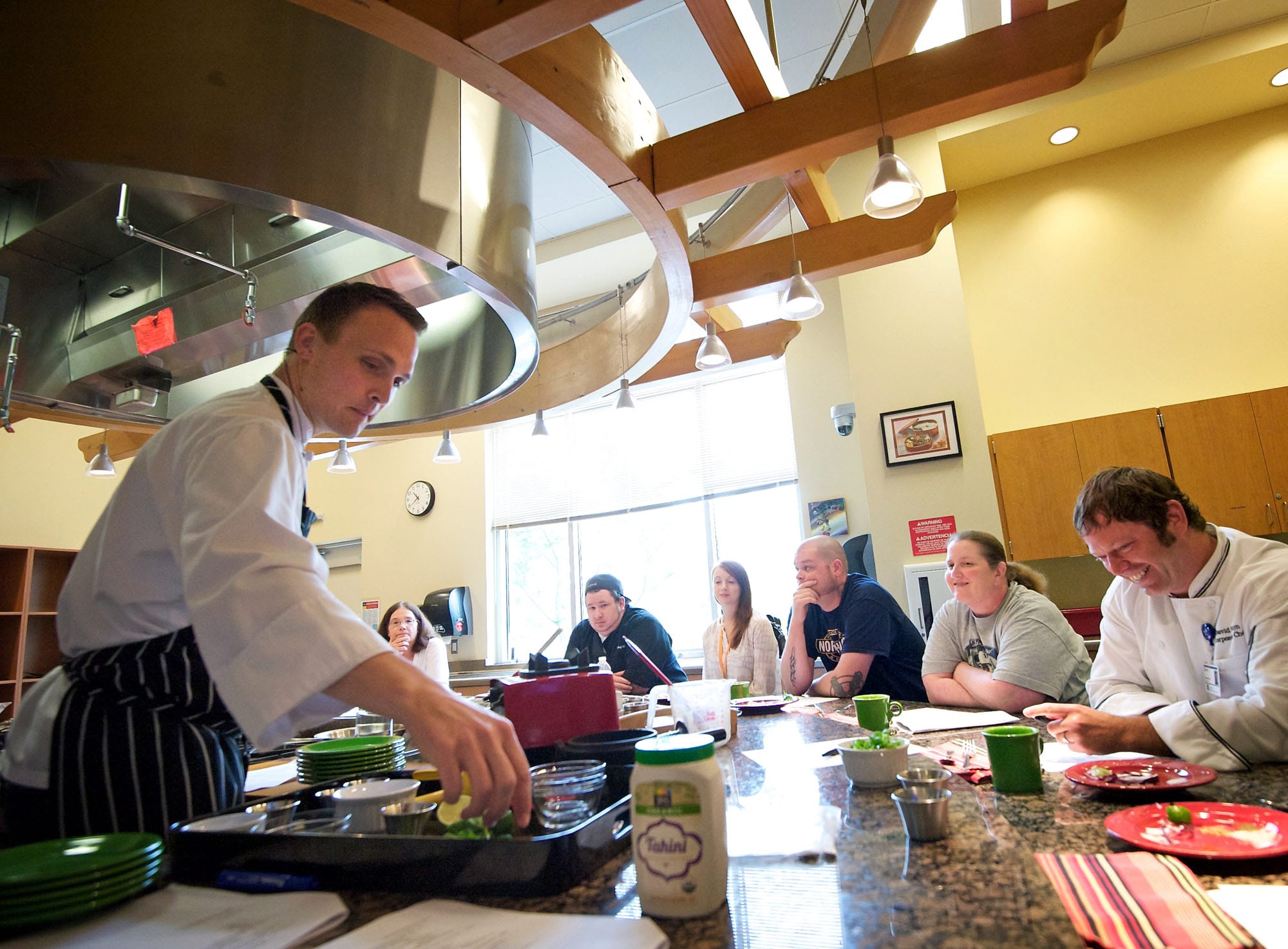Ninety percent of adults eat more sodium than is recommended for a healthy diet.
But the salt shaker on the table isn’t the biggest contributor to Americans’ salty eating habits. Instead, the top culprits are processed foods and restaurant meals.
To rein in sodium consumption, Clark County Public Health, funded by a grant from the Centers for Disease Control and Prevention, is working with local restaurants to cut back the amount of sodium in their dishes.
On Wednesday, the health department hosted a free two-hour culinary class for chefs working in local, independently owned restaurants. Garrett Berdan, a chef and registered dietitian from Bend, Ore., demonstrated techniques for enhancing the flavors of spices and using more flavorful ingredients.
On average, foods from dine-in restaurants contain 2,090 milligrams of sodium per 1,000 calories. Foods from fast-food restaurants contain slightly less, according to the CDC. In some cases, one restaurant meal can meet a person’s entire daily recommended sodium limit of 2,300 milligrams.
“We’re really working with restaurants to reduce sodium without sacrificing flavor,” said Melissa Martin, with the health department’s chronic disease prevention program.
Adding dry spices to hot oil, for example, will allow spices to disperse flavor that can then spread to all of the food. And using a mortar and pestle to grind seed spices releases flavorful oils, Berdan said.
Crushing dry herbs in your hand before adding them to food releases more of the herb’s aroma. And adding additional dry or fresh herbs near the end of cooking gives the dish an added punch of flavor, Berdan said.
“Salt is not the answer to making food taste better,” he said.
Berdan also discussed ways to reduce the amount of salt in menu items — changes most people would never notice. Research has shown a 20 percent reduction in sodium is not detectable by consumers, he said.
An easy way to reduce sodium in menu meals is to use low-sodium canned foods and prepared broths rather than the versions with added sodium, Berdan said.
He also suggested using kosher salt in lieu of table salt. One teaspoon of table salt contains 2,300 milligrams of sodium. One teaspoon of kosher salt, however, has about half as much sodium, simply because of its larger grain size, Berdan said.
“We’re talking about reducing the amount of sodium in the dishes on your menu, but not completely getting rid of it,” he said.
Russell Brent, owner of Mill Creek Pub in Battle Ground, attended the class Wednesday and has worked one-on-one with the health department to review and revise his recipes and practices.
“It’s not just the right thing to do, it’s what the consumer is telling us to do,” Brent said.
For the first time, customers are saying health concerns are their top reason for not eating out. In the past, the top reason has been money or family commitments, Brent said, citing research from the National Restaurant Association.
At Mill Creek Pub, Brent and his staff have already reduced sodium in all of their recipes by at least 20 percent — some by significantly more.
They’ve done that by using less salt in their rubs and seasoning mixtures. They also replaced feta cheese, which is brined in saltwater, with a goat cheese and now use seasoning shakers with smaller holes to better control the amount of added salt, Brent said.
One change that’s had a big impact is replacing cooking wine, which contains a significant amount of sodium, with regular table wine, which has a miniscule amount, Brent said.
“We didn’t know about the salt content,” Brent said of the wine. “We weren’t paying attention.”
The restaurant has also made fruit, rather than French fries, the default side dish on the kids menu. And in the coming months, the restaurant will make changes to the default sides on the regular menu, he said.
All of the efforts — the classes and the one-on-one work with local restaurants — are funded by a three-year sodium-reduction grant from the CDC. The health department is now wrapping up the first year of the grant, which is for $292,500.
The health department plans to host more culinary classes later this year and will expand its one-on-one program, the Clark County Healthy Neighborhood Restaurant Program, later this summer, Martin said. Both programs are voluntary.
“I just hope more and more restaurants jump on board with this,” Brent said.




